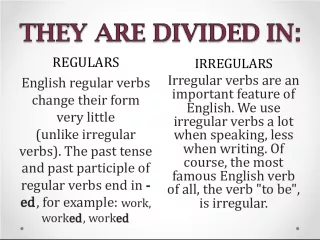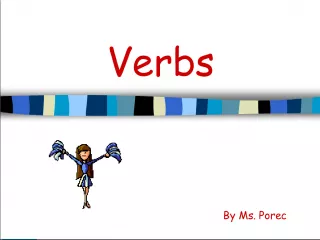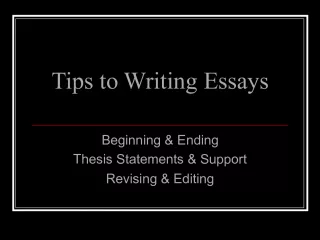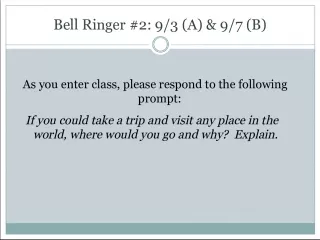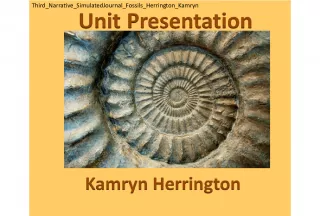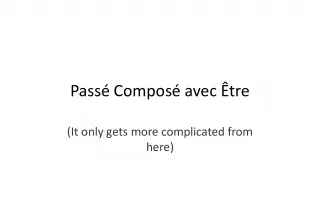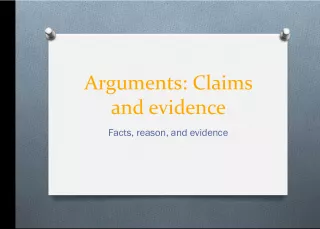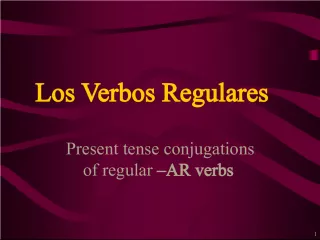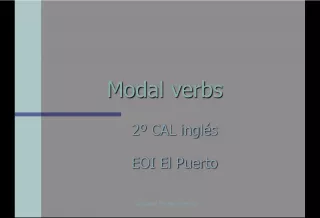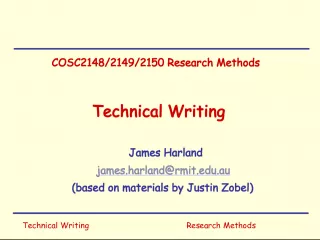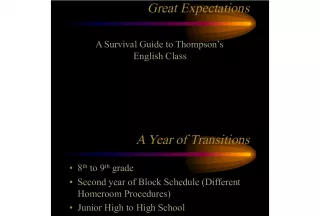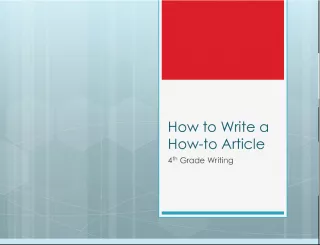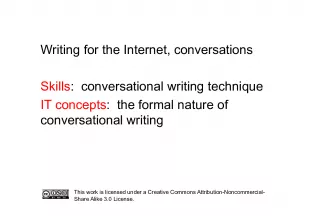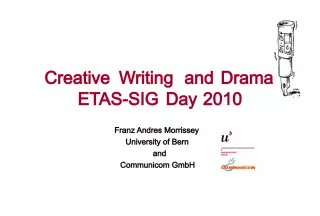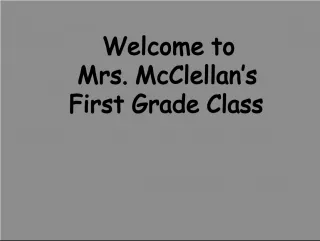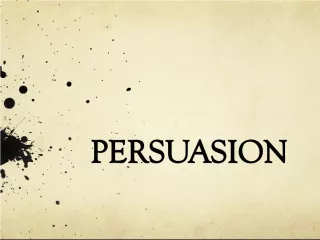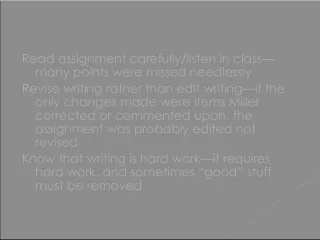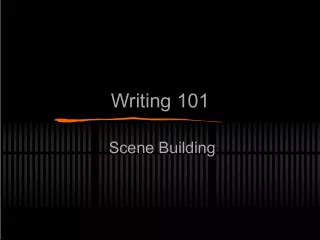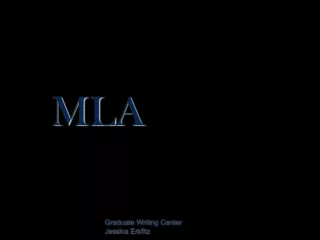Using Strong Verbs in Writing
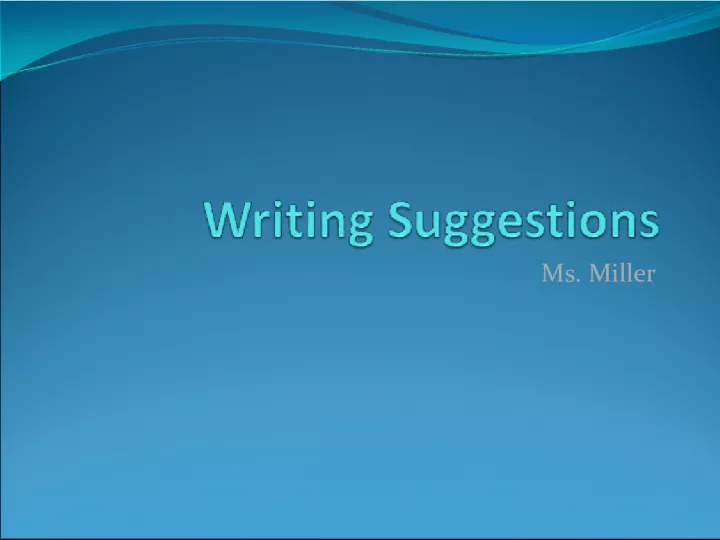

While be verbs are grammatically correct, they are weaker than action verbs. Use action verbs whenever possible, as they are stronger and more impactful. Avoid using "there" statements and opt for more descriptive phrases.
- Uploaded on | 0 Views
-
 charliepark
charliepark
About Using Strong Verbs in Writing
PowerPoint presentation about 'Using Strong Verbs in Writing'. This presentation describes the topic on While be verbs are grammatically correct, they are weaker than action verbs. Use action verbs whenever possible, as they are stronger and more impactful. Avoid using "there" statements and opt for more descriptive phrases.. The key topics included in this slideshow are . Download this presentation absolutely free.
Presentation Transcript
Slide1Ms. Miller
Slide2Use Strong Verbs Be verbs (is, are, was, were, be, am, been) are grammatically correct if used properly; however, they are weaker than action verbs. Attempt action verbs. Often one action verb is stronger than a verb phrase with a linking or helping verb (helps instead of is helping)
Slide3Avoid “there” statements There are many similarities between the plowman and the parson. Many similarities exist between the plowman and the parson. Or Chaucer presents many similarities between the plowman and the parson.
Slide4Write about literature in thepresent tense “ The Pardoner lies .” rather than “The Pardoner lied.” “ Chaucer despises hypocrisy .” rather than “Chaucer despised hypocrisy.” “ The Miller plays the bagpipes. ” rather than “The Miller played the bagpipes.”
Slide5Avoid run-on sentences A run-on sentence is created when two or more independent clauses (a group of words with a subject and a verb that can stand alone as a sentence— complete thought) are punctuated incorrectly.
Slide6Punctuating two independent clauses Two independent clauses may be written as two separate sentences—utilize a period and a capital letter to correct Two independent clauses may be divided with a comma and a coordinating conjunction (and, but, so, etc.) Two independent clauses may be separated by a semicolon.
Slide7Punctuating two independent clauses Two independent clauses may be separated by semicolon, a conjunctive adverb (however, therefore, moreover, nonetheless, etc.), and a comma Two independent clauses may be separated by a colon if the first introduces a second clause which modifies the first. (This usage occurs infrequently—do not force!)
Slide8Presenting verse line in prose Chaucer begins “The Prologue” with “When April with his showers sweet with fruit/The drought of Match has pierced unto the root” which announces the pilgrimage takes place in the spring (1-2).
Slide9Avoiding a full-blown introduction orconclusion If this concept is selected, the reduced introduction and conclusion should be come a part of another paragraph (introduction part of first body paragraph and conclusion part of last body paragraph) rather than standing alone as a very short paragraph.
